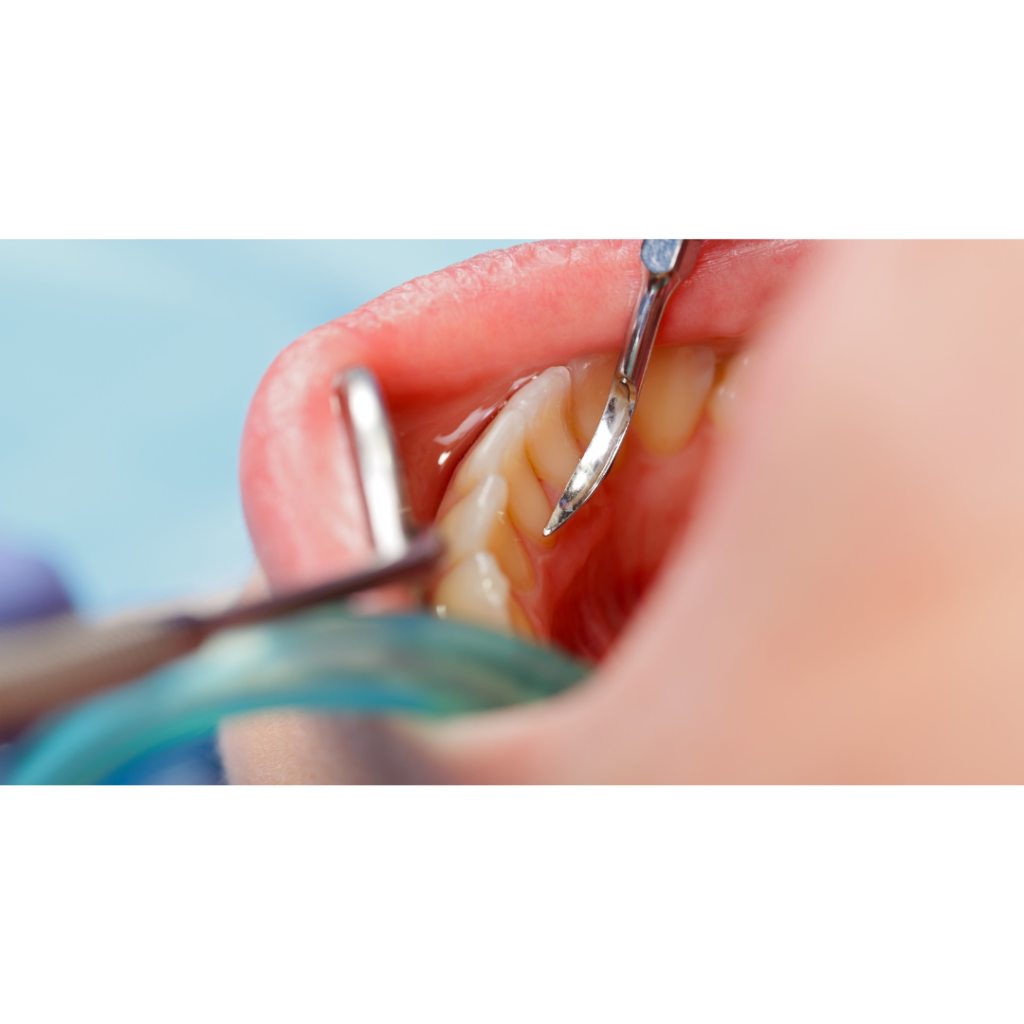Dental Cleanings

What are Dental Cleanings?
A Key to Maintaining Oral Health
Introduction
Dental cleanings, a crucial part of oral hygiene, involve the removal of dental plaque and tartar to prevent cavities, gingivitis, and periodontal disease. Regular dental cleanings are essential for maintaining healthy teeth and gums and contribute significantly to overall health. This article will explore what dental cleanings entail and why they are important.
Understanding Dental Cleanings
Dental cleanings, performed by a dental hygienist or dentist, go beyond the daily brushing and flossing routine. They involve thorough cleaning of the teeth, including areas that are difficult to reach with regular at-home oral care.
Mountain View Pointe Dental's Complete Guide to Dental Cleanings
The Process of Dental Cleaning: An In-Depth Look
Dental cleanings are a fundamental part of maintaining oral health, providing a deeper and more thorough cleaning than daily brushing and flossing. Understanding the steps involved in a dental cleaning can make the process seem less daunting and emphasize its importance. Here’s what typically happens during a dental cleaning:
1. Physical Examination
- Initial Check-Up: The process starts with a comprehensive examination of the mouth. A dental hygienist typically performs this using a small mirror to inspect the teeth and gums. This step is crucial to identify any existing issues or potential concerns.
- Gum Health Assessment: The hygienist looks for signs of gingivitis (inflamed gums) and checks for indications of periodontal disease (gum disease) which might need more intensive care.
- Communication with Dentist: If any major concerns are noted, the hygienist might consult with the dentist before proceeding with the cleaning.
2. Removing Plaque and Tartar
- Use of Scaler: Using a tool called a scaler, the hygienist meticulously removes plaque and tartar (hardened plaque) from around the gum line and between the teeth.
- Scraping Sounds: While the scraping sound can be unsettling, it is a normal part of the process. The amount of scraping needed varies based on the level of tartar accumulation.
- Importance of Tartar Removal: This step is crucial as tartar can only be removed professionally and, if left untreated, can lead to gum disease.
3. Toothpaste Cleaning
- High-Powered Electric Brush: After removing tartar, the hygienist uses a high-powered electric toothbrush to clean the teeth. This brushing, coupled with a gritty toothpaste, provides a deep clean.
- Grinding Noise: The electric brush makes a grinding noise, but this is part of its effective cleaning action. The toothpaste used often has a coarse texture, helping to gently scrub the teeth.
- Polishing: This step not only cleans but also polishes the teeth, contributing to the removal of surface stains.
4. Expert Flossing
- Thorough Flossing: Even for those who floss regularly at home, professional flossing by a dental hygienist can be more thorough. They can reach deep between teeth and identify spots that might need more attention.
- Bleeding Gums: It’s not uncommon for some bleeding to occur during this step, especially if there’s inflammation or if regular flossing isn’t a part of the patient’s daily routine.
Importance of Dental Cleanings: Delving Deeper into Oral Health
Dental cleanings are a vital component of oral hygiene routines, extending far beyond the aesthetics of a bright smile. These regular appointments play a crucial role in not only maintaining oral health but also in contributing to overall well-being. Let’s explore the importance of dental cleanings in more detail:
1. Preventing Diseases
- Gum Disease Prevention: Regular dental cleanings are essential in preventing periodontal (gum) disease, a condition where the gums become infected and inflamed. If left untreated, this can progress to more serious stages, leading to gum recession and tooth loss.
- Tartar Removal: While brushing and flossing at home can remove plaque, only professional dental cleanings can effectively remove tartar (hardened plaque). Tartar accumulation is a major contributor to gum disease.
- Halting Disease Progression: Early stages of gum disease, like gingivitis, are reversible with proper dental care. Regular cleanings halt the progression of gum disease before it escalates to more serious conditions.
2. Detection of Oral Health Issues
- Early Identification: During a dental cleaning, the dentist or hygienist has the opportunity to assess the health of your mouth. This includes checking for signs of decay, gum disease, and even oral cancer.
- Catching Problems Early: Regular cleanings allow for early detection of issues that might not yet be visible or causing pain. Early intervention can lead to more effective and less invasive treatment.
- Comprehensive Examination: Along with cleaning, dentists often perform a comprehensive examination of your teeth, gums, and mouth, which can identify problems like impacted teeth, bruxism (teeth grinding), and more.
3. Contribution to Overall Health
- Oral Health and General Health Link: Emerging research suggests a strong link between oral health and general health. Poor oral hygiene can contribute to various systemic diseases.
- Reducing Risk of Other Diseases: Studies have shown associations between chronic oral infections and heart disease, stroke, diabetes, and respiratory disease. Regular dental cleanings can reduce the bacteria load in the mouth, potentially lowering the risk of these conditions.
- Educational Opportunity: Dental cleanings also provide an opportunity for professionals to educate patients on effective oral hygiene practices, which can have a positive impact on overall health.
How Often Should You Get Dental Cleanings? Exploring Optimal Frequency
Regular dental cleanings are a cornerstone of maintaining good oral hygiene, but how often should one undergo these procedures? The frequency can vary depending on various factors related to individual oral health needs. Here’s a detailed look at determining the right frequency for dental cleanings:
General Recommendations
- American Dental Association (ADA) Guidelines: The ADA suggests that individuals visit their dentist at least once a year for a routine dental checkup and cleaning. This annual visit typically suffices for maintaining good oral health in many people.
- Purpose of Regular Visits: These routine checkups are essential not only for cleaning but also for identifying any potential oral health issues early on, when they are most treatable.
Personalized Dental Care Needs
- Variation Based on Individual Needs: While the general recommendation is an annual visit, the ideal frequency can vary greatly from person to person. Some people may require more frequent visits due to specific oral health conditions or predispositions.
- Risk Factors Influencing Frequency:
- Gum Disease: Individuals with a history of periodontal (gum) disease may need more frequent cleanings to manage their condition.
- Plaque Build-Up: People who accumulate plaque or tartar quickly might benefit from more frequent cleanings to prevent gum disease and decay.
- Other Health Conditions: Conditions like diabetes or heart disease can affect oral health, sometimes necessitating more frequent dental care.
- Lifestyle Factors: Smoking, diet, and oral hygiene practices also play a role in determining how often you should have dental cleanings.
Special Considerations
- Children and Adolescents: Young patients, especially those undergoing orthodontic treatment, might require more frequent cleanings to prevent tooth decay and maintain gum health.
- Pregnant Women: During pregnancy, hormonal changes can affect gum health, so expecting mothers may be advised to have more frequent cleanings.
- Elderly Patients: Older adults often face unique dental challenges, such as dry mouth and wear and tear on the teeth, that might require more regular professional dental care.
Regular Assessment by Dentist
- Personalized Schedule: Your dentist is best positioned to recommend a cleaning schedule tailored to your individual needs. This assessment is based on a comprehensive evaluation of your oral health, including factors like gum health, plaque levels, and overall dental hygiene.
- Adjustments Over Time: The frequency of dental cleanings can change over time, depending on changes in your oral health, age, and lifestyle.
Conclusion
Determining the frequency of dental cleanings is not a one-size-fits-all approach. It varies based on individual health needs and circumstances. While the general recommendation is to visit your dentist at least once a year, many people may benefit from more frequent cleanings. Regular dental checkups are essential for making this determination and ensuring your oral health is optimally maintained.
Consult with your dentist to establish a dental cleaning schedule that best aligns with your specific oral health needs and circumstances.

